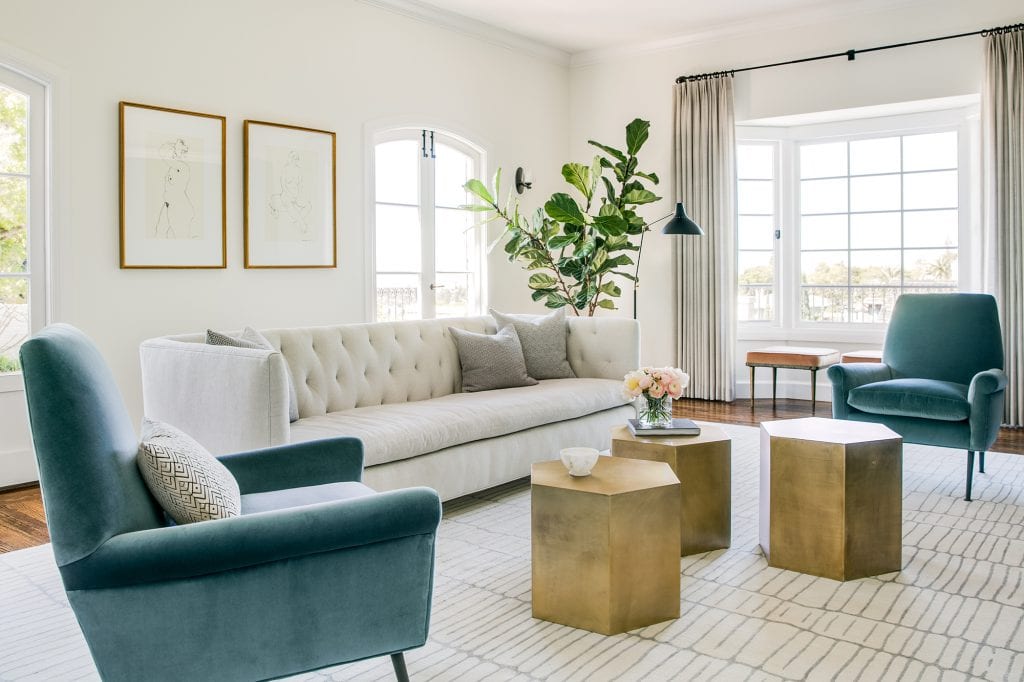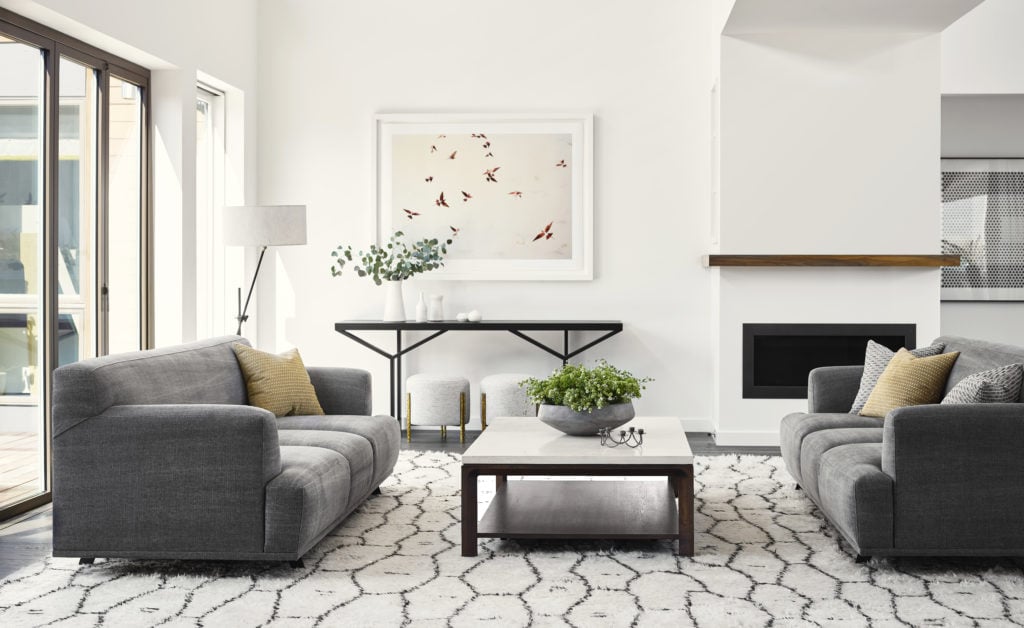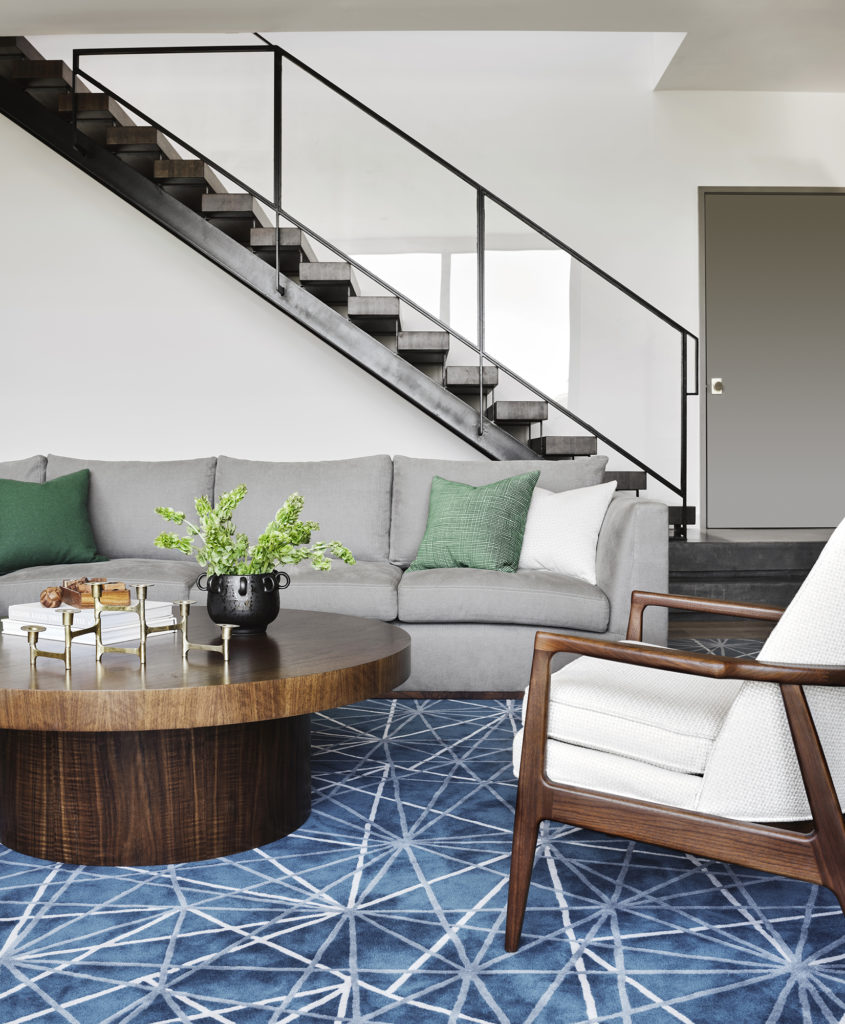Designing a Non-toxic California Home
There are many elements to consider when designing a sustainable, non-toxic home, but as a green San Francisco interior designer I would argue that flame retardant chemicals are enemy number one. They migrate out of the foam in upholstered furniture and into dust over their lifespan and are ingested by occupants, oftentimes the most vulnerable – young children. Some of these chemicals are associated with lower IQ in children, cancer, hormone disruption, and other health issues.
Upholstered furniture sold in California after 1975 was required by law to have flame retardant chemicals in the foam and the rest of the country followed suit. This was purportedly for safety reasons, but after much research these chemicals were not found to slow down the ignition of upholstery. Fortunately, after much advocacy the law was updated in 2013 and California no longer required flame retardants in upholstery (effective in 2015) but they were also not banned outright.

What does this mean for you? Many retailers have phased out these harmful chemicals from their manufacturing process, but there are still companies that use foam that contain flame retardant chemicals. Be prepared to ask questions before you make any major purchases. Ask the customer service representative if the specific item you are interested in contains flame retardants. I’ve seen it vary from product to product within the same brand. If you live in California, you can always check the label on the underside of a furniture piece, manufacturers are required to check the box if flame retardants are present. If your existing sofa is in great condition consider swapping out the foam cushion inserts for flame retardant free foam at your local upholstery shop.
Standard upholstered goods are made from polyurethane foam (poly-foam) wrapped in dacron. Both materials are man-made and petroleum-based. They contain isocyanates and polyols that are highly flammable and are treated with flame-retardant chemicals to reduce combustibility. The chemicals in these flame retardants have been linked to a wide range of health problems. Since this product is made from a non-renewable resource, we try to limit it’s use – what’s healthy for us ends up being healthier for the planet as well.

Healthiest option: Natural latex foam wrapped in organic wool (which is naturally fire resistant). When designing custom, eco-friendly upholstery for our California clients we specify the following materials:
• FSC certified solid wood frame
• Non-toxic glues/ adhesives
• Natural latex foam for the cushion core, wrapped in organic wool and/or organic wool and down feather blend.
If you are working with an interior designer in San Francisco be sure to make your preferences for non-toxic finishes known. If not, consider approaching your local upholstery workroom to inquire about a custom eco-friendly sofa. Ask if they work directly with the public or only with the design trade. This is definitely a more involved process and will require that you work closely with the fabricator on dimensions, style etc. Top retailer picks: Lee Industries and Cisco Home.
Another element of your sofa that could also be off gassing VOCs into your home is the wood frame. Avoid frames constructed of medium density fiberboard (MDF) or particleboard. These types of engineered wood are made by gluing many layers of wood together and can contain formaldehyde-based glue which harms indoor air quality. Look for sofas that are made with solid wood frames, ideally kiln-dried frames made of FSC certified wood with water-based, non-toxic adhesives.

Stain-resistant upholstery fabrics are a popular choice for families with young children and pets, but unfortunately these fabrics are not the safest and healthiest option since they are treated with potentially harmful chemicals. As a healthy alternative to stain-resistant fabrics we have a local San Francisco Bay Area upholstery cleaning company stain treat sofas and sectionals with a water-based, non-toxic stain treatment after they are delivered to a client’s home.
Synthetic fabrics include nylon, polyester and rayon, and can contain residual chemicals on their surface potentially leading to negative health effects. Polyester is a petroleum product and relies on non-renewable resources for it’s production. We recommend opting for natural fabric blends, with organic cotton, linen or wool content.
Pro tip: For heavy use upholstered pieces such as your family room sofa look for woven fabrics that have multiple thread colors and some variation which will naturally camouflage stains.
Head to our Green page for more information on sustainable interior design services in San Francisco.
